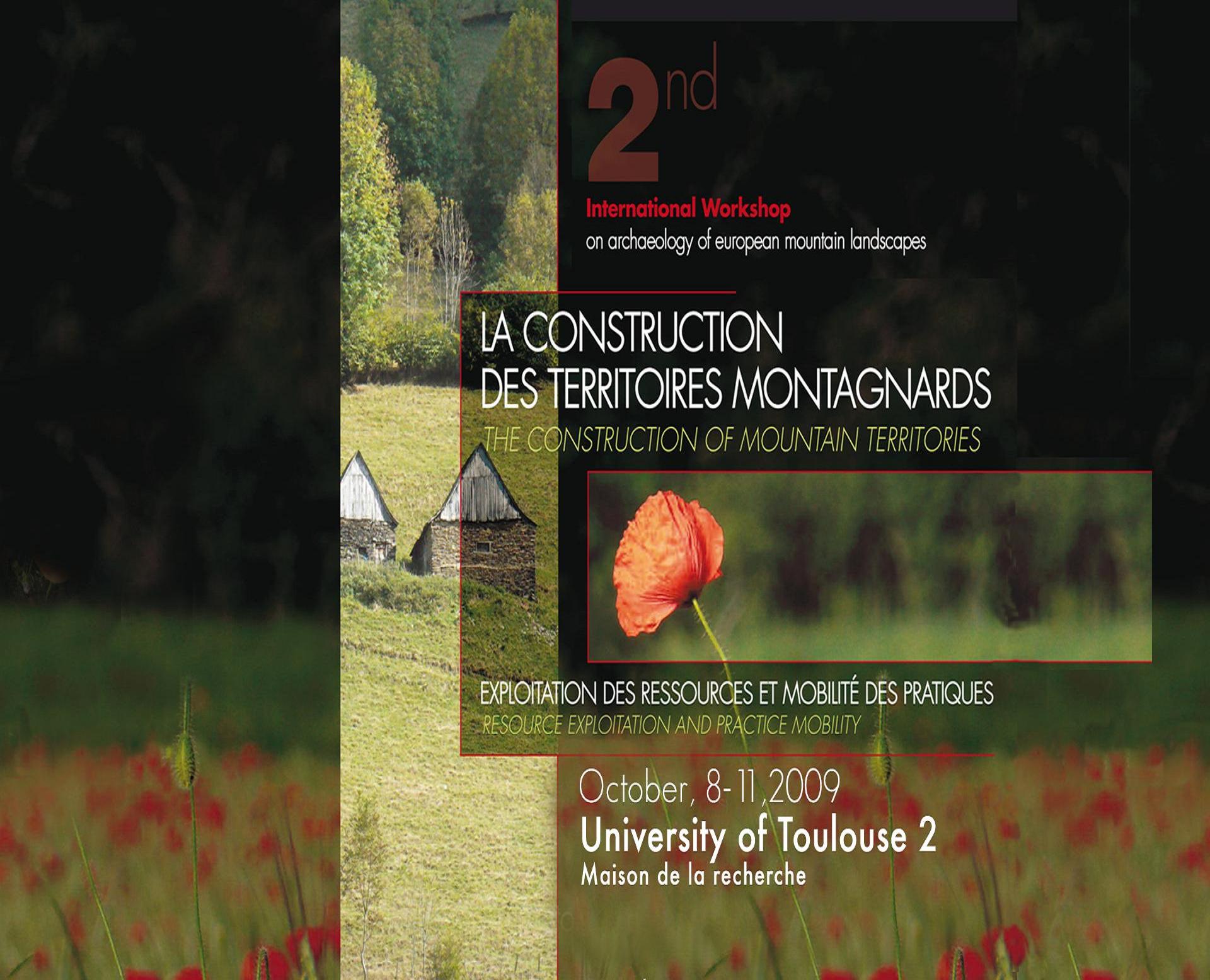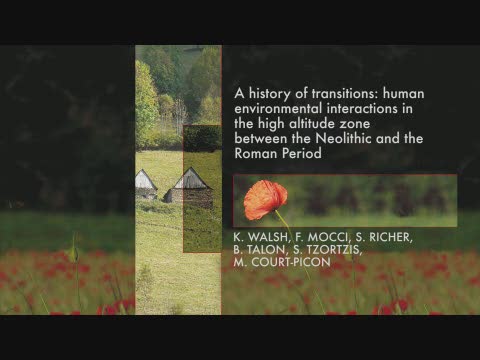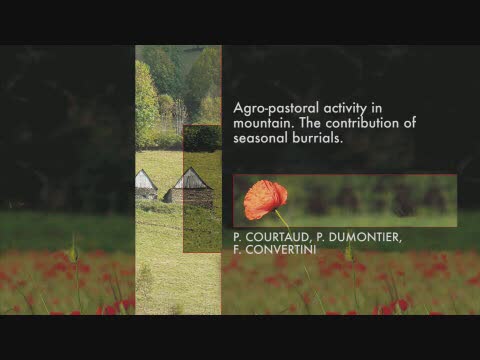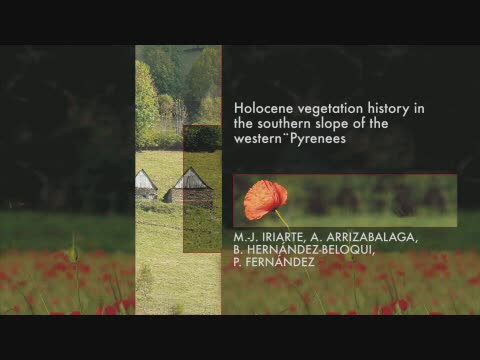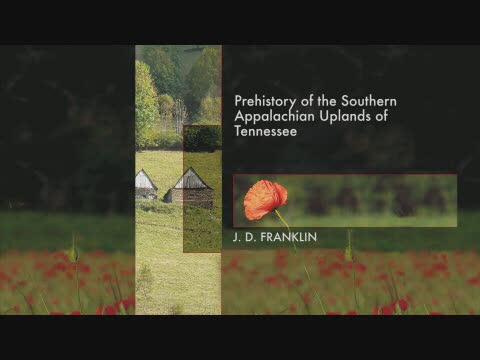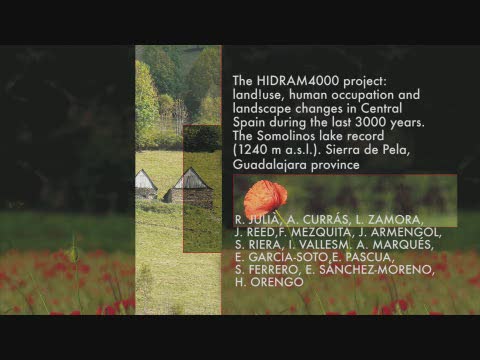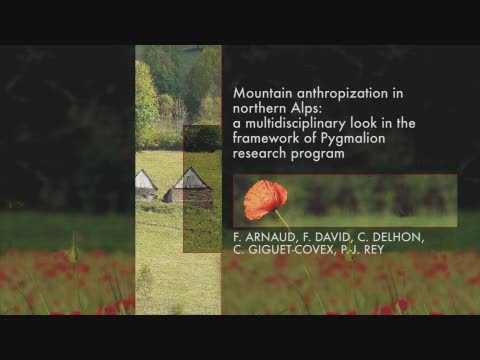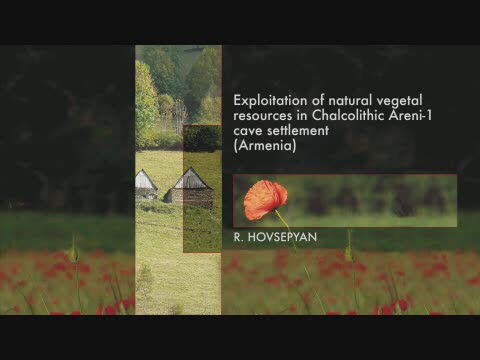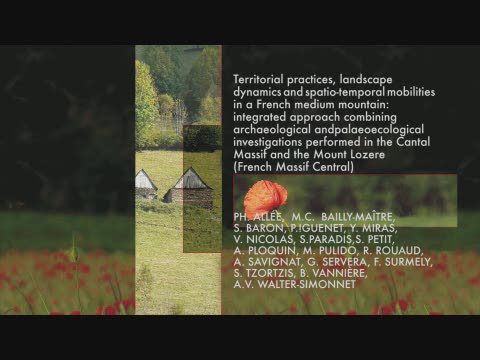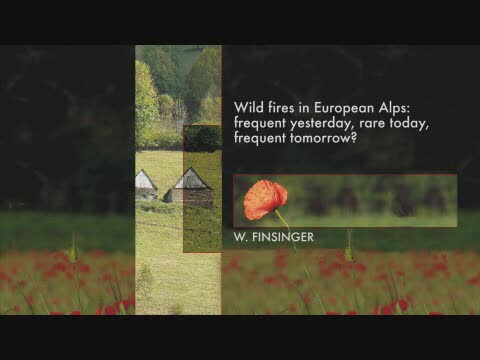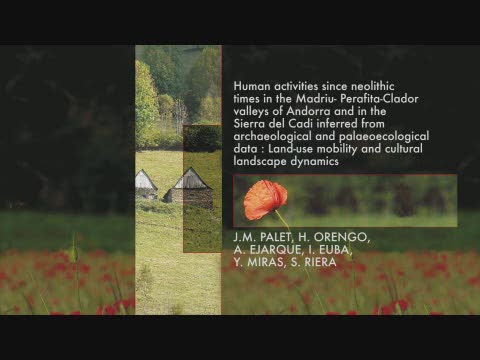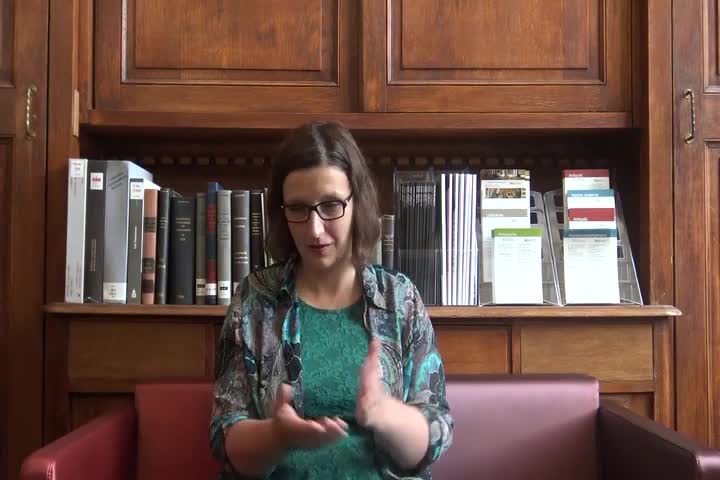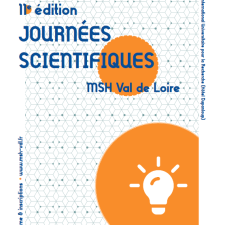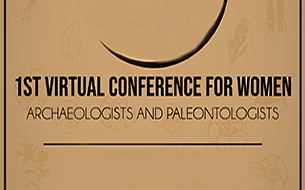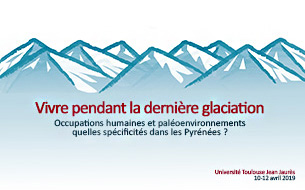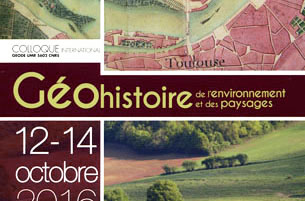Notice
Exploitation of copper ressources in Alps in the late Neolithic and Bronze Age / Laurent Carozza
- document 1 document 2 document 3
- niveau 1 niveau 2 niveau 3
Descriptif
Glacial fluctuations and exploitation of copper ressources in high mountain Alps in the late Neolithic and Bronze Age (2500-1500 BC). Laurent Carozza (Université Toulouse2-Le Mirail). In 2eme workshop d'Archéologie du paysage des montagnes européennes "La construction des territoires montagnards : exploitation des ressources et mobilité des pratiques" organisé par les Laboratoires GEODE et TRACES (Toulouse) et le Centre d'Archéologie Préhistorique du Rhône aux Alpes (Valence, France). Université Toulouse II-Le Mirail, 8-11 octobre 2009. [Première journée.]
Copper exploitation developed in the southern half of France during the late Neolithic -between the 4th and 3rd millenia before our era- ("La Capitelle" in Péret : 3200-2900 BC ; Ambert et al. 2005). On the southern edge of the Massif Central and in the Pyrenees, the mining and metallurgical districts developed low-productivity metal extraction. The production was then diffused thanks to local networks. This first type of metallurgy is mostly to be found in lower and medium altitude mountainous areas. This model, which could be called the « Neolithic system » was completed in the second half of the third millennium, between the 25th and 24th centuries BC, with the end of the mining operations and a modification in metal consumption and supply networks.
In the Alps, the expansion of copper exploitation in high mountain areas from the 24th century BC has been observed. The exploitation of bornite in Saint-Veran (Hautes-Alpes) began around 2350 BC. The trench pillar –known as the ‘Tranchée des Anciens’- delivered nearly 400 m3 of ore processed in workshops situated at an altitude above 2300 m. The carbon datings show that the whole mining and metallurgical site operated for less than 500 years, between 2400 and 1900 BC, at the end of the Neolithic period and during the early Bronze Age.
Further North, in the Grandes Rousses massif, a large mining area was discovered recently (Bailly- Maître, Gonon, 2008) and the identification of metal pollution (copper and lead) in proglacial altitude lakes (Lake Bramant, 2500m, Guyard et al., 2008) shows a mass production of copper in the early Bronze Age (2200-1650 BC). The copper resources are situated at an altitude between 2250 and 2600 m and, unlike in Saint-Veran, are distributed over a very wide area. The exploitation of the mining district seems to have stopped during the 17th century BC, at the beginning of the Middle Bronze Age.
Among the reasons which could account for the intensification of the exploitation of copper resources, the causal link between the complexity of the techniques and mineral processing has long been put forward. Changes in weather conditions -as they imply the conditions of access to copper- can offer an alternative scenario. The core samples taken in the Bramant Lake and the Blanc d’Huez Lake (« Grandes Rousses ») show fast fluctuations of glacial activity during the Neolithic period and the Bronze Age (Chapron et al., 2008). In the Bramant Lake, the predominance of organic layers -dated from the early Bronze Age to the beginning of the late Bronze Age- reflects declining glacial phases.
Evidence suggests that the favorable climatic conditions which developed at the turn of the 3rd and 2nd millenia BC promoted -to the benefit of glaciers- the exploitation of previously inaccessible copper resources. A return to less favorable conditions, marked from 1600 BC by newly advanced ice, would signal the disuse of mining sites, to the benefit of resources located at a lower altitude, such as the Austrian Tyrol and the Italian Trentino.
Intervention / Responsable scientifique
Dans la même collection
-
La construction des territoires montagnards : exploitation des ressources et mobilité des pratiques…
GalopDidierThe occupation and the exploitation of mountain environments, both during conquest and maximum demographic phases, or on the contrary, during desertification phases, differ in geographical
-
Human environmental interactions in high altitude zone between Neolithic and roman period / K. Walsh
WalshKevinA History of Transitions : human environmental interactions in the high altitude zone between Neolithic and roman period. Kevin WALSH. In "La construction des territoires montagnards : exploitation
-
L'agro-pastoralisme en milieu montagnard : l'apport des sépultures saisonnières / Patrice Courtaud
CourtaudPatriceL'agro-pastoralisme en milieu montagnard : l'apport des sépultures saisonnières. Patrice COURTAUD. In "La construction des territoires montagnards : exploitation des ressources et mobilité des
-
L'évolution végétale holocène sur le versant sud des Pyrénées occidentales / Maria-José Iriarte
IriarteMaría JoséL'évolution végétale holocène sur le versant sud des Pyrénées occidentales. Maria José IRIARTE. In "La construction des territoires montagnards : exploitation des ressources et mobilité des pratiques"
-
Prehistory of the Southern Appalachian uplands of Tennessee / Jay Franklin
FranklinJay D.Prehistory of the Southern Appalachian uplands of Tennessee. Jay FRANKLIN. In "La construction des territoires montagnards : exploitation des ressources et mobilité des pratiques", 2e International
-
A cultural landscape research in a mediterranean mountain (Barcelona-Girona) / A. Garcia Molsosa
Garcia MolsosaArnauA cultural landscape research in a mediterranean mountain area : the "Massis del Montseny project" (Barcelona-Girona) / A. GARCIA MOLSOSA. In "La construction des territoires montagnards :
-
The Hidram4000 project : land use, human occupation and lanscape changes in Spain / A. Curras
Currás DominguezAndresThe Hidram4000 project : land use, human occupation and lanscape changes in Spain during the last 3000 years. The Somolinos lake record (1240 M A.S.L.) : Siera de Pela, Guadalajara Province. Andres
-
Mountain anthropization in Alps : a multidisciplinary look in the Pygmalion program / F. Arnaud
ArnaudFabienMountain anthropization in Alps : a multidisciplinary look in the framework of Pygmalion research program. Fabien ARNAUD. In "La construction des territoires montagnards : exploitation des ressources
-
Exploitation of natural vegetal resources in chalcolithic areni-1 cave (Armenia) / R. Hovsepyan
HovsepyanRomanExploitation of natural vegetal resources in chalcolithic areni-1 cave settlement (Armenia). Roman HOVSEPYAN ovsepyan, Roman. In "La construction des territoires montagnards : exploitation des
-
Territorial practices, landscape dynamics and mobilities in a french mountain / P. Allée, Y. MIras
AlléePhilippeMirasYannickTerritorial practices, landscape dynamics and spatio-temporal mobilities in a french medium mountain : integrated approach combining archaeological and paleoecological inverstigations performed in the
-
Wildfires in european alps : frequent yesterday, rare today, frequent tomorrow ? / W. Finsinger
FinsingerWalterWildfires in european alps : frequent yesterday, rare today, frequent tomorrow ?. Walter Finsinger. In "La construction des territoires montagnards : exploitation des ressources et mobilité des
-
Exploitation des vallées andorranes depuis le Néolithique/ J.-M. Palet Martinez, H. Orengo Romeu
Palet i MartínezJosep M.Orengo RomeuHèctor A.L'exploitation des ressources des vallées andorranes du Madriu-Perafita-Claror et de la chaîne du Cadi (Pyrénées orientales) depuis le Néolithique à partir des données archéologiques et
Sur le même thème
-
Témoignage de Anca-Cristina Dan
DanAnca-CristinaGuérinAnaëlleDans le cadre de la préparation du 250e anniversaire de son ouverture au public, en décembre 2020, la Bibliothèque interuniversitaire de la Sorbonne (BIS) a mené une collecte d’archives orales afin de
-
Au bon air des jardins. Géohistoire climatique des parcs et jardins urbains (18e-21e siècles), comp…
MetzgerAlexisLes parcs et jardins ont connu à la fois des métamorphoses et une certaine continuité de leurs fonctions écologiques (Mathis et Pépy 2017; Musée historique de Lausanne 2022).
-
"Ouranopithecus macedoniensis" (late Miocene, Greece): analysis of mandibular fragments using …
IoannidouMelaniaOuranopithecus macedoniensis (late Miocene, Greece): analysis of mandibular fragments using 3D geometric morphometrics / Melania Ioannidou, in colloque "1st Virtual Conference for Women
-
Vivre pendant la dernière glaciation. Occupations humaines et paléoenvironnements : quelles spécifi…
LejayMathieuVivre pendant la dernière glaciation. Occupations humaines et paléoenvironnements : quelles spécificités dans les Pyrénées ? Introduction / Mathieu Lejay
-
Les chiroptères comme agent d’érosion endokarstique, conséquences sur la conservation des objets ar…
VanaraNathalieLes chiroptères comme agent d’érosion endokarstique, conséquences sur la conservation des objets archéologiques : l’exemple de la grotte d’Isturitz (Pyrénées occidentales, France) / Nathalie Vanara
-
Les changements de nature des délimitations territoriales et leurs effets sur l’organisation des so…
Cette journée d’étude interdisciplinaire a réuni des conférenciers internationaux, en vue de faire un état de l’art et d’étudier des situations historiques et géographiques particulièrement
-
De l'environnement au géographique. Pour ne pas entrer à reculons dans l'anthropocène ? / Georges B…
BertrandGeorgesDe l'environnement au géographique. Pour ne pas entrer à reculons dans l'anthropocène ? / Georges Bertrand, in "Géohistoire de l'environnement et des paysages", colloque international organisé, sous
-
Géohistoire forestière : regards croisés / Marc Galochet
GalochetMarcGéohistoire forestière : regards croisés / Marc Galochet, in "Géohistoire de l'environnement et des paysages", colloque international organisé, sous la responsabilité scientifique de Philippe Valette
-
Géohistoire environnementale et histoire globale / Christian Grataloup
GrataloupChristianGéohistoire environnementale et histoire globale / Christian Grataloup, in "Géohistoire de l'environnement et des paysages", colloque international organisé, sous la responsabilité scientifique de
-
Géohistoire de l’environnement et des paysages : grands témoins / Philippe Leveau
LeveauPhilippeGéohistoire de l’environnement et des paysages : grands témoins / Philippe Leveau, in "Géohistoire de l'environnement et des paysages", colloque international organisé, sous la responsabilité
-
Géohistoire de l’environnement et des paysages : grands témoins / Diego Moreno
MorenoDiegoGéohistoire de l’environnement et des paysages : grands témoins / Diego Moreno in "Géohistoire de l'environnement et des paysages", colloque international organisé, sous la responsabilité scientifique
-
Trouver les limites du Limes. Modélisation de l’économie, de la démographie et des transports aux c…
Philip Verhagen, chercheur en archéologie spatiale à l'université libre d'Amsterdam, a donné une conférence le 15 mai 2018 sur le projet « Finding the limits of the limes », dans le cadre de sa


